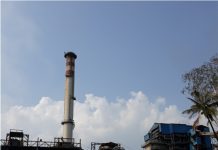New Delhi: The International Energy Agency (IEA) has released its latest medium-term oil market outlook, which examines how India’s involvement in the global oil market may change between now and 2030. The report examines energy transition patterns that may affect oil demand in various industries, and how these changes may impact the country’s energy security.
The report indicates that the growth in the world’s demand for oil is expected to slow in the coming years as energy transitions advance. At the same time, global oil production is set to ramp up, easing market strains and pushing spare capacity towards levels unseen outside of the Covid crisis, according to the IEA’s new oil market outlook.
According to the report, this marks a pivotal change as energy transitions progress and powerful forces reshape the sector. The report, titled Oil 2024, provides a comprehensive analysis of future oil supply and demand, highlighting key trends and implications for energy security, refining, trade, and investment.
It will be a great relief for India, as it imports over 80 per cent of its requirement. India’s crude import bill was USD 132.4 billion in FY24 and USD 157.5 billion in FY23. If crude prices stabilize because of abundant availability, it will be good for the Indian economy.
Projections indicate that India will emerge as the primary contributor to global oil demand growth until 2030, surpassing China by 2027. The anticipated surge in India’s oil demand is estimated to reach approximately 1.2 million barrels per day (bpd) by 2023, constituting over a third of the projected global demand growth of 3.2 million bpd by 2030.
The IEA’s report underscores a notable deceleration in global oil demand growth as energy transitions gain momentum.
Despite a projected rise in oil use driven by burgeoning economies in Asia and increasing demand from the aviation and petrochemical sectors, several factors are expected to counterbalance these gains.
Key factors influencing this slowdown include the rise in electric vehicle adoption, improved fuel efficiency in conventional vehicles, and a decline in the use of oil for electricity generation in the Middle East.
Structural economic changes, particularly in China, also contribute to the shift. As a result, global oil demand, which averaged slightly over 102 million barrels per day (bpd) in 2023, is forecasted to plateau near 106 million bpd by the end of the decade.
Fatih Birol, IEA Executive Director said, “As the pandemic rebound loses steam, clean energy transitions advance, and the structure of China’s economy shifts, growth in global oil demand is slowing down and set to reach its peak by 2030. This year, we expect demand to rise by around 1 million barrels per day.”
Birol added, “This report’s projections, based on the latest data, show a major supply surplus emerging this decade, suggesting that oil companies may want to make sure their business strategies and plans are prepared for the changes taking place.”
In contrast to the moderating demand, global oil production capacity is set to experience substantial growth, primarily led by the United States and other producers in the Americas.
The report forecasts total supply capacity to rise to nearly 114 million bpd by 2030, a significant 8 million bpd above the projected global demand.
This surplus in supply could lead to unprecedented levels of spare capacity, unseen outside of the Covid-19 pandemic.
Producers outside of the OPEC+ alliance are at the forefront of this expansion, with non-OPEC+ countries expected to account for three-quarters of the anticipated capacity increase.
The United States alone is projected to contribute 2.1 million bpd to non-OPEC+ gains, with additional significant contributions from Argentina, Brazil, Canada, and Guyana, collectively adding 2.7 million bpd.
The emerging supply surplus has profound implications for oil markets and producer economies, especially within OPEC and the US shale industry.
It suggests a period of heightened market stability but also raises potential challenges for producer economies that have historically relied on higher oil prices for economic stability.
The IEA’s report indicates that while the surge in capacity will initially satisfy rising demand, the flow of new projects is expected to taper off towards the end of the decade.
This slowdown in project approvals could eventually stall capacity growth among leading non-OPEC+ producers.
Nonetheless, the report notes that if existing project proposals are approved, an additional 1.3 million bpd of non-OPEC+ capacity could be realized by 2030.
The report forecasts a modest expansion in global refining capacity by 3.3 million bpd from 2023 to 2030, which, while lower than historical trends, is deemed adequate to meet the anticipated demand for refined oil products.
This forecast, coupled with an increase in the supply of non-refined fuels such as biofuels and natural gas liquids, suggests potential refinery closures towards the latter part of the decade and a deceleration in capacity growth in Asia post-2027.
Despite the slower growth in oil demand, the IEA highlights that global demand is still projected to be 3.2 million bpd higher in 2030 than in 2023, barring stronger policy measures or significant shifts in consumption patterns.
This increase is primarily driven by emerging economies in Asia, particularly India, which is expected to see higher oil use for transportation.
Advanced economies, conversely, are set to continue their long-term decline in oil demand, dropping from nearly 46 million bpd in 2023 to less than 43 million bpd by 2030, a level last observed in 1991, excluding the pandemic period.
The IEA’s outlook underscores the importance of maintaining a focus on energy security amidst these shifts.
While the forecast suggests a comfortably supplied market, the evolving landscape of energy transitions, policy changes, and market dynamics requires vigilant planning and strategic adaptation by oil companies and producing nations.
Meanwhile, India’s current oil stock holding levels equate to 66 days of net-import cover, with Strategic Petroleum Reserve (SPR) stocks covering seven days. In comparison, IEA member countries maintain a stockpile equivalent to 90 days of their demand. While India holds an associate member status and is not a full member of the agency, there is a need to enhance its capacity to respond to potential oil supply disruptions. Strengthening and implementing SPR programs and enhancing oil industry readiness are crucial steps to mitigate the impact of emergencies such as wars on energy supplies. (ANI)













